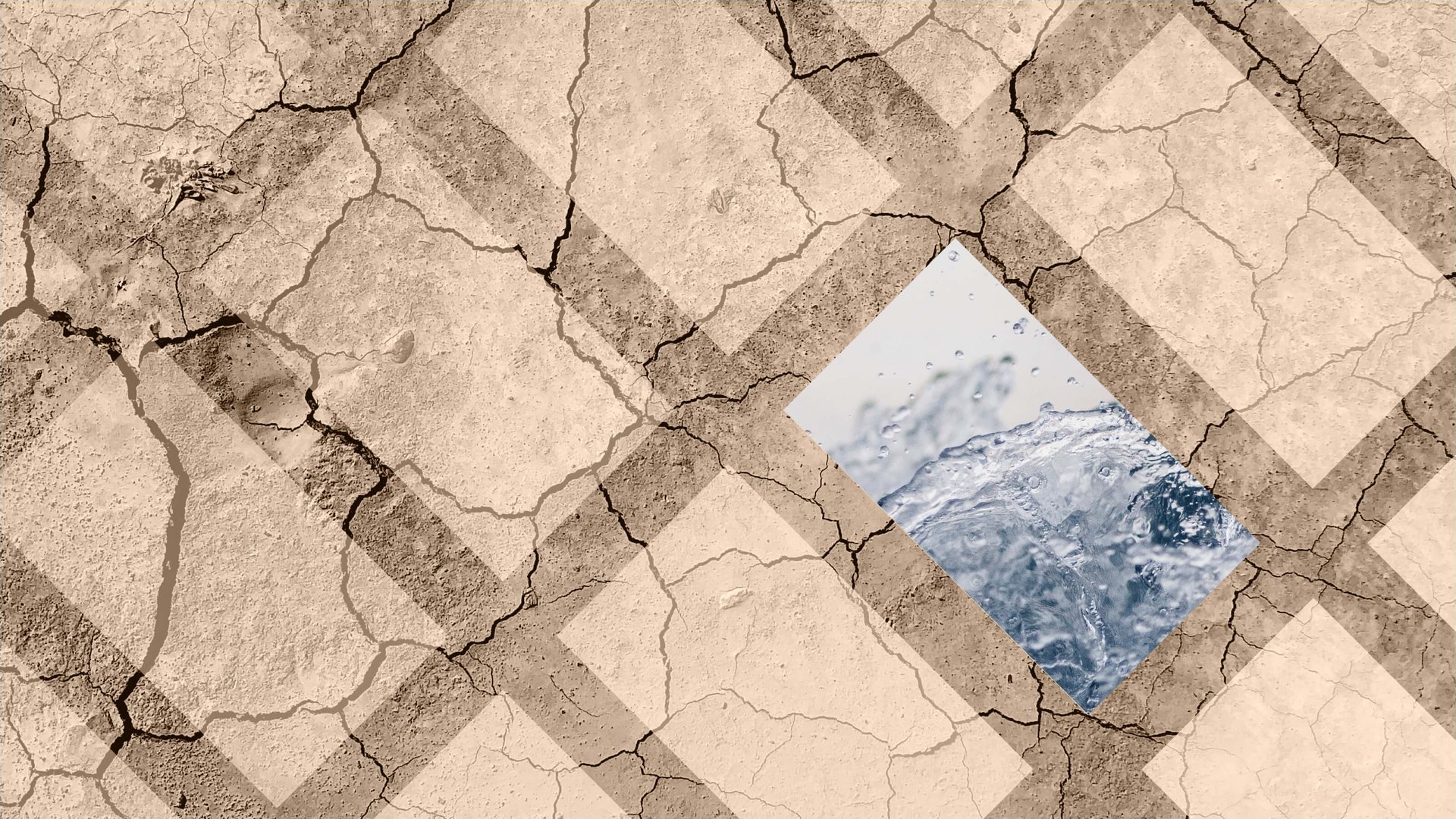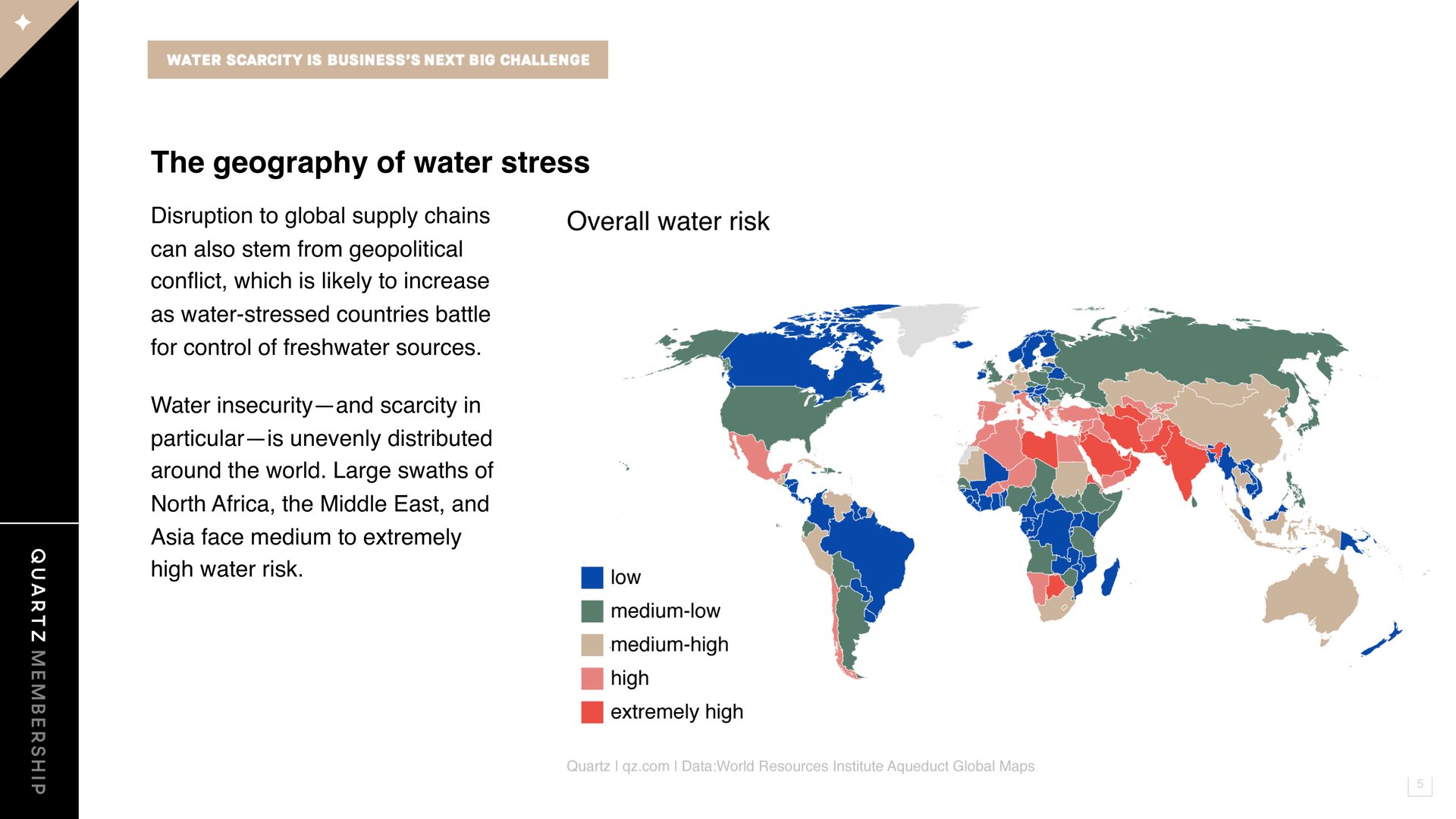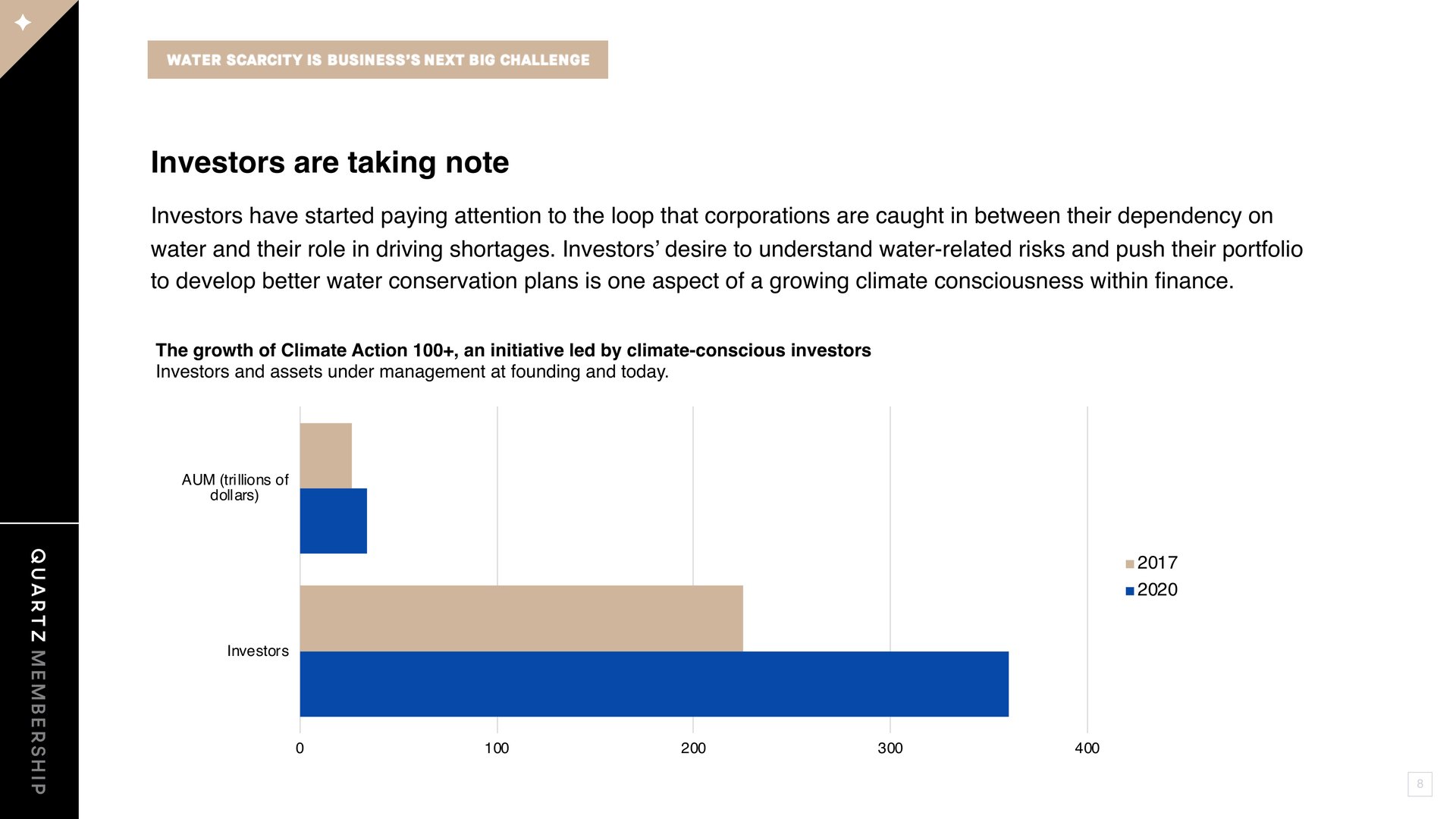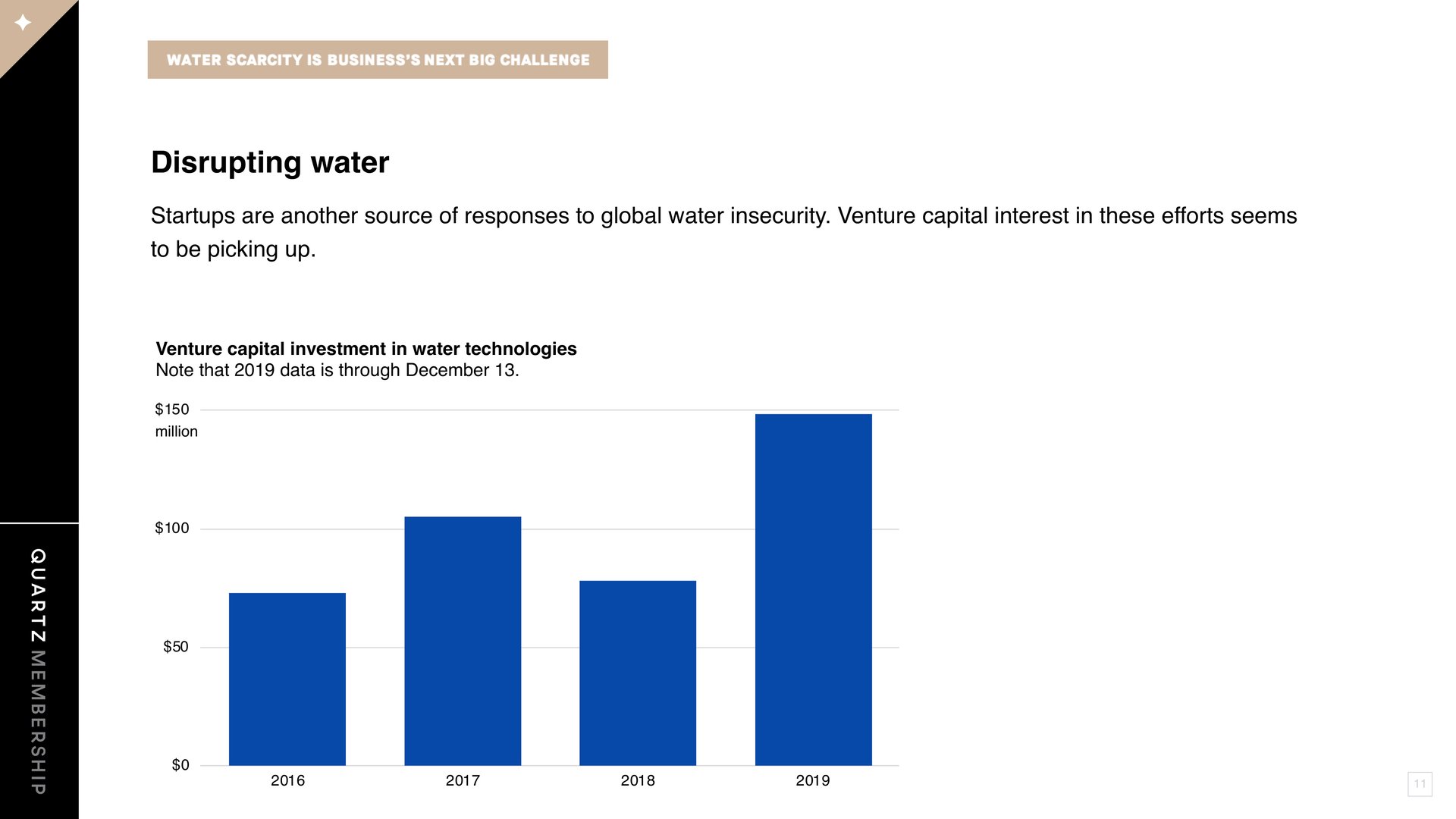Water scarcity is business’s next big challenge
By 2050, some 5.7 billion people will lack access to clean, safe water. Global water demand is expected to increase by one third. As the world approaches this potential future, companies are more concerned than ever about water scarcity. Still, many of them lack concrete plans for addressing it.


By 2050, some 5.7 billion people will lack access to clean, safe water. Global water demand is expected to increase by one third. As the world approaches this potential future, companies are more concerned than ever about water scarcity. Still, many of them lack concrete plans for addressing it.
Quartz’s latest presentation breaks down what a global water crisis would mean for business. We walk you through how industry has contributed to the problem of water scarcity—and how some corporations are planning to be part of the solution.

Water stress is distributed unevenly around the world. In the highest-risk parts of the globe, lack of water is already upending local life and livelihood. Water stress can also lead to geopolitical instability and disrupted supply chains. And yet when people—and businesses themselves—need water most, industry often exacerbates the problem. Industrial pollution and intensive water extraction can cost manufacturers’ neighbors their access to clean drinking water. Communities around the world have made clear that they will not accept this trade-off without a fight, and protests from India to Peru have successfully delayed or prevented industrial site openings.

Investors have started paying attention to the loop that corporations are caught in between their dependency on water and their role in driving shortages. Investors’ desire to understand water-related risks and push their portfolio to develop better water conservation plans is one aspect of a growing climate consciousness within finance.

Addressing water security is difficult, but potential solutions are out there. Improved efficiency in industrial water use, pricing that better reflects water’s value, and new infrastructure can all help. These solutions require all hands on deck, from corporations to NGOs and sustainability startups to federal and local governments. The nonprofit database GuideStar lists about 8,000 nonprofits worldwide dedicated to water security. For-profit corporations want to be part of the solution, too. An EcoLab-Greenbiz survey found that 88% of companies intend to take steps to curb water use in the next three years.
To see all of the slides, you can view the PDF version or download the PowerPoint file, which includes our sources and notes. This is one of an ongoing series of member-exclusive presentations, which you can read, reformat, and use as you wish.
Please share any feedback about what would make these presentations more useful—or topics you’d like to see us cover—by emailing us at [email protected]. These presentations are an exclusive benefit for Quartz members. We’d love it if you’d encourage any friends or colleagues who express interest to become a member so they can access them too.